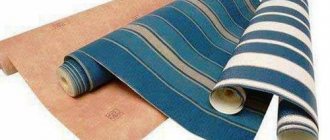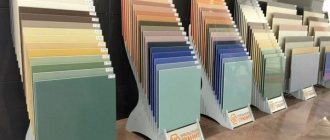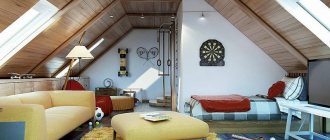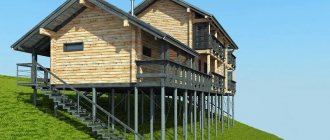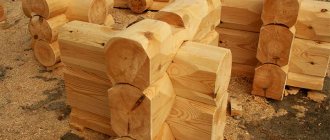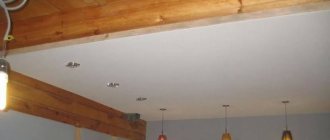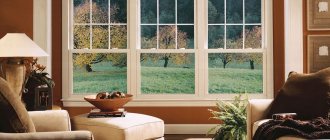Among other types of building materials used in the construction of the frame of a private house, foam concrete blocks are distinguished by their low cost, low thermal conductivity and low weight. Due to the extreme simplicity of the manufacturing technology, they can be made directly on the site in the utility room.
However, to build your own personal cottage, it is better to purchase foam blocks in a factory-made version with standard sizes and the brand required for a particular case. It is recommended to take some foam concrete products for external walls, and others for internal partitions.
How many degrees can aerated concrete withstand?
Thus, answering the question of what temperature aerated concrete can withstand, we can safely say that the cellular material can withstand temperatures up to +900 ℃. If the fire temperature was below +700 ℃, then the gas blocks can be reused.
Interesting materials:
How to answer the question why do you want to change jobs? How to restart iPhone 6 if the home button does not work? How to restart a laptop if the keyboard does not work? How to restart Samsung if the power button does not work? How to reboot an Android phone if the button does not work? How to restart the phone if the Android screen does not work? How to restart a Samsung phone if the sensor does not work? How do you say homework in Russian? How to overcome laziness at work? How to raise the window if the motor does not work?
What is a foam concrete block?
Foam block is a porous building material made from a mixture of cement, water with sand and a foaming agent. This is one of the varieties of cellular concrete (foam concrete). But unlike aerated concrete, which is similar in structure, voids in it are formed not due to chemical reactions inside the block during the hardening process, but due to the mixing of the concrete mixture with pre-prepared foam.
The foaming agent used is organic or synthetic. The first protein-based option is more expensive, but the block with it is more durable and environmentally friendly. Synthetics are cheap, but have a 4th hazard class. The foam blocks themselves are safe, but you have to be more careful when mixing the solution when working with the original mixture.
Forms for pouring foam concrete mixture
This material for building houses is produced in two ways:
- By cutting a monolith of hardened foam concrete into “bricks” of the required size;
- Filling forms with the required dimensions in width, height and length.
The process of sawing an array of hardened foam concrete into blocks
To save on raw materials and increase the density of the blocks, ash, clay and other bulk fine-grained materials are often added to the mixture when mixing. On the one hand, this allows a significant reduction in cement consumption, and on the other hand, it leads to thickening of the interpore walls inside the foam block, making the product more durable. Moreover, the size of internal voids in this case decreases, increasing the thermal conductivity of the material.
Appearance
Let's sum it up
Foam concrete has a set of undeniable advantages and is cheaper than aerated concrete. Having decided to use foam blocks or monolithic foam concrete to build or insulate your own home, study the properties of the material and consult with specialists. They will tell you what sand concrete is and how fiber for concrete increases the strength of the composite. When thinking about using gas-filled blocks for building construction, study the difference between aerated concrete and gas silicate.
How to choose a suitable foam block
First of all, you need to decide what size blocks you need. If the masonry is carried out independently, then large-format blocks will not be suitable, because 1-2 people cannot handle them.
For example, when I built a house from foam blocks, there was no need to use a block larger than 20*30*60 cm.
In answer to the question “which foam blocks are best to build a house from” it is difficult to give a definite answer. The thing is that the usual M marking is not used in relation to this material. Unlike brick, for example, the brand of foam block does not indicate its strength, but its density.
That is, looking at the number after the letter M in the brand of brick, you can understand how many kg per unit area it can withstand. In foam concrete, markings are carried out with numbers from 400 to 1200 after the letter D.
The number tells how many kilograms a cubic meter of brick weighs. Pay close attention to the photo below. The price, as you understand, will increase in proportion to the increase in brand.
If you take this point into account in your foam block house project, you will save yourself from unnecessary hassle, and you will not have to invest in subsequent repairs.
As you understand, it is impossible to say which foam blocks are better in principle. It is necessary to understand that each has its own use and use it correctly.
What should be the density of the foam block for load-bearing walls. Correct selection of material
The thickness of the walls made of foam blocks should ensure a sufficient level of strength of the building, be characterized by excellent thermal insulation qualities and ensure economical consumption of electricity, which is used to heat the house.
To do this, careful calculations are carried out on the thermophysical properties and strength of the building material. You can do them yourself or order them from specialists.
What to consider
The choice of wall thickness is primarily influenced by the climate of the area.
First of all, the choice of wall thickness is influenced by the following factors, which must be taken into account when building a house in each region:
To determine the thickness of the external walls of the building being constructed, a thermal engineering calculation is performed. To carry it out, the following data is used:
The amount of thermal conductivity depends on the size of the blocks
The industry produces foam concrete, which, depending on its purpose, has different densities, indicated by the letter “D” and numbers indicating the weight of a cubic meter of material. Thus, a foam block of the D-500 brand means that the weight is 1 cubic meter. is 500 kg.
GSOP stands for heating degree-daily period and characterizes the severity of the winter period in a certain region of the country. The higher this indicator, the colder the winter.
The methodology for determining this indicator in the Russian Federation and other countries differs. The value of GSOP is calculated by the formula:
Data on the resistance of building materials used for masonry walls are presented in SNIP for construction heating engineering No. 2 - 3 - 79.
By correctly calculating the thickness of the load-bearing walls of a building made of foam blocks, the developer will not spend extra money on heating, and will also not incur unnecessary costs for installing a reinforced foundation and thick walls.
Foam block for load-bearing walls
Popular types of foam blocks D-600 and D-800
When choosing blocks, pay attention to the method of their manufacture. Non-autoclaved foam blocks of the D-600 and D-800 brands are in great demand.
So, for the Northern capital, the optimal wall thickness will be 400 mm, therefore, for the construction of external walls, blocks measuring 60x30x40 cm with a density of 600 kg are recommended, which make it possible to build houses with 3 floors.
The use of such blocks allows us to provide reliable sound insulation, and excellent thermal insulation qualities of the material and as insulation.
Each developer can independently calculate how thick all the walls of the foam block house planned for construction should be. To do this, it is enough to use the following formula: D = R×λ.
In this value, D refers to the desired thickness, R indicates the heat transfer resistance index, λ indicates the thermal conductivity coefficient of foam concrete.
To carry out calculations, indicators of quantities should be taken from building codes, and since the indicators of thermal conductivity and strength of building foam blocks are constant, then by substituting their value into the formula, you can obtain the value of the thickness of the walls of the house: 3.14 × 0.14 = 0.4396 or 440 mm.
Foam block has advantages over any building material, since, despite the cellular structure, it has sufficient strength. This allows it to bear the load not only of its own weight, but also of reinforced concrete floor panels.
Production technology
If you are interested in the question, what are foam blocks, you need to study the intricacies of production. So, first the solution is prepared, using standard proportions for mixing classic concrete. Then the resulting mass is placed in a special mixing container. In addition to water, cement and sand, the foam block contains foaming additives. They are introduced into the mixture when it is placed in the mixing container. A foam generator is used for this.
Additives are a foaming substance in an aqueous solution. If organic components are used, the finished material will be of higher quality. This is due to the significant thickness of the walls between the pores. When foam blocks contain synthetic materials, strength decreases. It is not recommended to use such material for the walls of a residential building.
The process of mixing components occurs under pressure. After this, a monolithic slab is formed, which will then be cut into bricks. Another method is also common, in which forms are filled with foam concrete; the density in both cases is the same.
Having figured out what foam blocks are made of, you need to learn more about drying technology. Excess moisture evaporates from the material naturally. Due to this, the uniformity of the fine-cell structure is reduced. The manufacturing technology is quite simple; in addition, much less cement is used. However, its amount cannot be further reduced. In this case, the pores combine with each other, forming channels, which will lead to an increase in the intensity of moisture absorption by the blocks.
The density of foam concrete decreases, and at the same time its strength decreases. As a result, foam blocks, which contain little cement and quite a lot of foaming agents, will serve for a short period, because they quickly collapse.
Crack repair
Since foam concrete is a relatively weak building material, it is often necessary to seal cracks on such walls. Before starting to repair the walls, the cause of the cracks is determined.
Possible cracks in foam concrete walls that appear during the operation of the house and methods of elimination:
Small shrinkage cracks .
They clean the plaster and dust, prime it, joint it with a metal spatula to the required width and length, and seal the seam with a water mixture of foam concrete crumbs and cement.- Large mechanical breaks are reinforced, and the seams themselves are sealed with adhesive for laying, blocks, construction foam or epoxy glue.
You can find more information about repairing cracks in foam concrete walls here.
Specifics of foam concrete production
Various methods are used to produce foam concrete:
- classical technology. It regulates the need to use a foam generator that supplies foaming agent through pipes into the prepared cement-sand composition. The working solution, mixed in a mixer with a foaming agent, is poured into molding containers or supplied through pipes to the work site. During the process of cement hydration, the foam hardens, forming a porous structure inside the mass. Hardness development occurs under natural temperature conditions corresponding to the state of the environment;
- porization method. The name of the manufacturing method is associated with the use of a special unit - a porosizer. It ensures the introduction of dry components into the foaming agent stream. Particles of the cement-sand mixture are deposited on the shell of the foam bubbles. As a result, working foam material is formed, supplied through pressure lines to the place of work. Professional builders call the porous method of producing foam concrete the method of dry mineralization. It is in demand in the field of industrial construction for the constant supply of foam concrete mixture.
When deciding on the method of producing foam concrete, study the features of each production method and perform economic calculations.
The cost of foam concrete is low
Areas of application
Foam blocks are used in the construction of low and medium-rise buildings for various purposes. This material is inferior to concrete in strength; even reinforcement does not help to completely solve this problem. Foam blocks are used in the construction of industrial buildings and private houses. They are used when load-bearing walls and internal partitions are built, as well as for the purpose of thermal insulation of an object.
In each case, different types of products are used: structural (the most durable), structural and thermal insulation, thermal insulation. The first option is characterized by insufficiently low thermal conductivity, which is why the building is additionally insulated. Thermal insulation products, on the contrary, are much less durable compared to structural analogues, but retain heat better.
Pros and cons of houses made of foam concrete blocks
The advantages are as follows:
- The sizes of foam blocks standardized by GOST - simplifies the calculations of estimates and the work of masons;
- Cheap - foam concrete is one of the most cost-effective materials for building a house outside the city;
- Ease of processing - an ordinary hacksaw is enough to cut to the desired size;
- Durability - from them you can build a reliable and durable cottage three floors high, without using a reinforced concrete reinforcing frame;
- Light in weight – even the largest blocks can be worked alone without the use of special equipment;
- Excellent thermal insulation performance - houses made of foam blocks are considered one of the warmest; they outright outperform solid ceramic bricks in terms of heat transfer.
Foam concrete blocks are environmentally friendly and fire-resistant materials. The walls of houses made from them naturally “breathe,” which greatly simplifies maintaining a comfortable microclimate in the home. Here only log houses can compete with such cottages. However, in terms of fire resistance, wood is definitely not a competitor to foamed concrete.
Foam blocks also have disadvantages, but there are only two of them:
- High level of moisture absorption;
- Limited choice of type of foundation for the house (it must be strip or with a reliable grillage).
The main disadvantage of foam concrete is its predisposition to absorb moisture. There is no way to leave masonry without a protective finish. This applies to both interior decor and exterior façade.
Carefully check the quality of foam blocks: low-quality material may crack
When comparing the pros and cons of this building material, do not forget about the foundation underneath it. For houses made of foam blocks, the foundation will have to be made reliable and expensive. These concrete “bricks” themselves are quite light. However, the masonry of them must lie on a flat monolithic support so that, due to the movement of the soil at one of the corners of the structure, it does not crack from below to the roof.
Design resistance of masonry
The design resistance of masonry is a value determined by building standards, which includes various factors that reduce the strength of the structure - the wall. That is, a safety margin is created according to SNiP.
The design resistance of aerated concrete masonry with strength class B 2.5 is 1.0 MPa, that is, 10 kg/cm2. As you can see, this value is 2.5 times less than the strength of aerated concrete itself. That is, a linear meter of masonry can withstand a load of 30 tons.
Types and sizes of foam blocks
One of the main characteristics of a foam concrete block in its marking is indicated by the letter “B” and a number from 0.5 to 60. This is an indicator of strength, i.e. load in kg/cm2 that a given foam block is able to withstand during compression. The higher this index, the more weight the building material in question can support without destroying its integrity. If a two-story house is being built, then it is best to take blocks with the highest possible strength for the first floor, and lower ones for the second.
The first parameter is directly related to the brand of foam concrete “M” in the same marking. The figure in its designation is calculated using the formula “strength value B” * 10/0.7, rounded to the nearest whole number. The second criterion in the classification is their average density (MPa), which is expressed in the product name by the letter “D” and a value from 300 to 1200.
Based on density and purpose, they are divided into three groups:
- Thermal insulation - D300 (B0.35 or B0.75), D400 (B0.75; B1 or B2) and D500 (B1.5; B2; B2.5 or B3.5).
- Structural and thermal insulation – D600 (B2; B2.5; B3.5 or B5), D700 (B2; B2.5; B3.5 or B5), D800 (B2.5, B3.5, B5 or B7.5) and D900 (B2.5; B3.5; B5 or B7.5).
- Structural – D1000 (B5 or B7.5), D1100 (B7.5 or B10) and D1200 (B10 or B12.5).
The frost resistance of foam blocks is designated from F15 to F75. Products marked F15–F25 are intended for the construction of internal partitions of a house, and from F25 and above are already recommended for the construction of external walls.
Depending on the average density and size, foam concrete blocks are divided into 10 types with markings from I to X. For example, a type “I” foam block has the following dimensions: height 188 mm, width 300 mm and length 588 mm. In terms of density, it can be made with the grade D500, D600 or D700. For a block of type “V”, GOST establishes dimensions of 288x250x288 mm and any class D from 300 to 1200. And the foam concrete product “X” has overall dimensions of 88x200x398 mm and a density of only D1200.
Foam block sizes
Foam block size table
| Dimensions, mm | Pieces per 1 cubic meter | Quantity on pallet | Quantity in masonry per 1 sq. m |
| 600x300x100 | 55 | 80 | 16,7 |
| 600x300x120 | 46 | 64 | 13,8 |
| 600x300x150 | 37 | 48 | 11,2 |
| 600x300x200 | 27 | 40 | 8,4 |
| 600x300x250 | 22 | 32 | 6,7 |
Approximate construction time
Construction time largely depends on construction technology, construction period, type of masonry and modification of blocks.
The shrinkage time and final drying of masonry joints also depend on these parameters. If the process of building a foam block house is taken responsibly, it can be erected in a period of 4 to 6 months , including in stages:
- Preparation of the construction site, installation of utility networks and construction of the foundation, 1 month.
- Laying walls of 2 floors with overlap, 1 month.
- Finishing work on the facade and construction of partitions, 21 days.
- Roof insulation, 3 days.
- Finishing the house, installing thermal protection systems, installing utility networks in the house, installing windows and doors, 1 month.
Why foam block
First of all, let us remind you: do not confuse foam concrete with aerated concrete. One of the articles on our website discusses in detail the fundamental differences between these two materials. It is worth noting that the price of foam concrete is more favorable.
What he really is
A foam block is a small “block” made by mixing a concrete mixture with special foaming components. It is the foam that forms cavities in the concrete, which reduce its weight and increase its thermal insulation parameters.
Its standard size is 200*300*600 mm. For clarity, look at the photo below and imagine how to build a house from foam blocks quickly and easily, in comparison with the same brick.
Houses made of this material cost significantly less than houses of the same size made of brick or, for example, timber. And if you are not lazy and build everything yourself, then the savings will exceed even your wildest expectations.
Having an attractive price, foam block houses are in no way inferior in their parameters to stone or wooden ones. Another attractive feature of the material is its environmental friendliness.
Advantages of the material
Disadvantages of the material
There are few of them, but they are still present:
Which foam block is better for building a house: features of choice
Foam block is one of the most common materials in private housing construction. Its porous structure, physical parameters and durability are the decisive factors that encourage people to choose this material.
In this article we will tell you how a truly responsible owner builds a house from foam blocks, how to choose foam blocks for building a house and how to speed up construction as much as possible, while paying due attention to all the key points.

